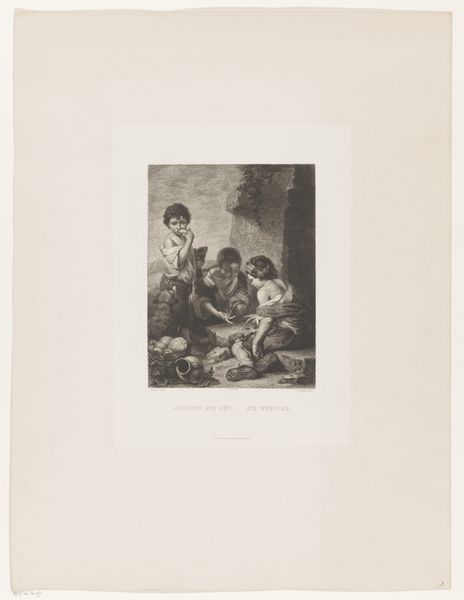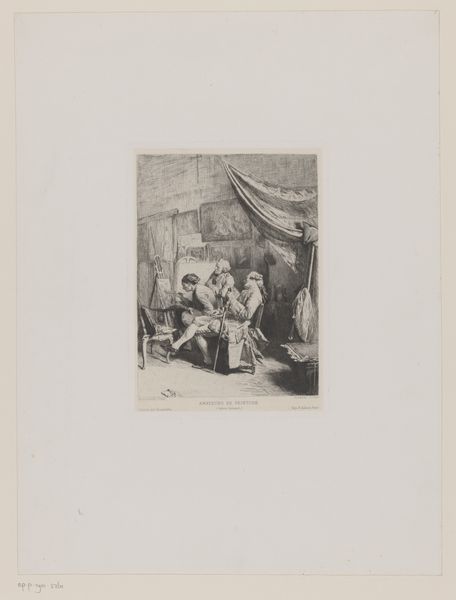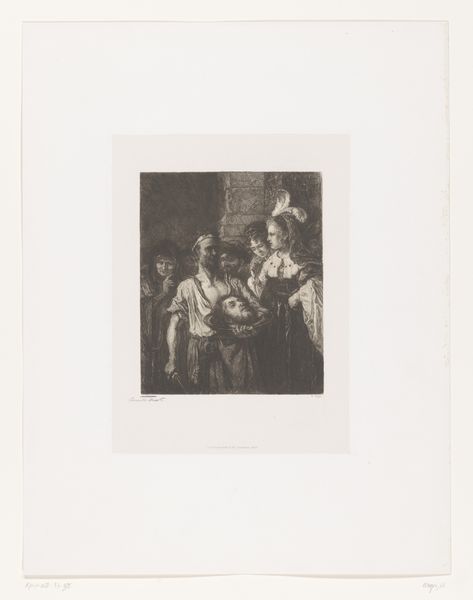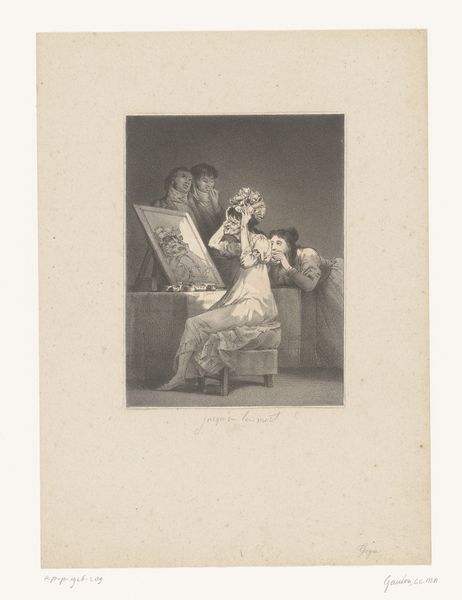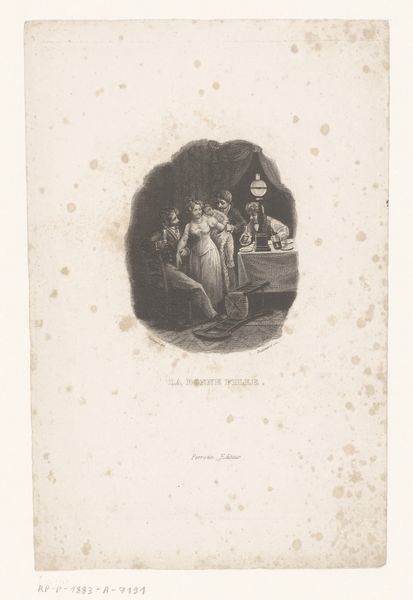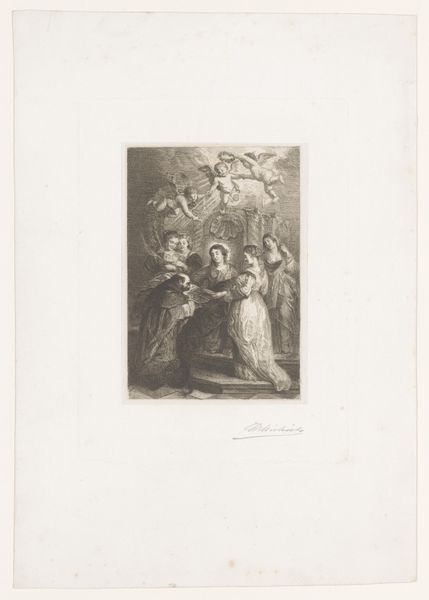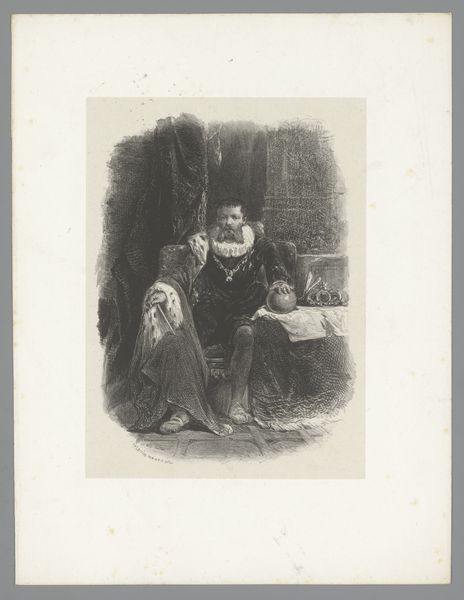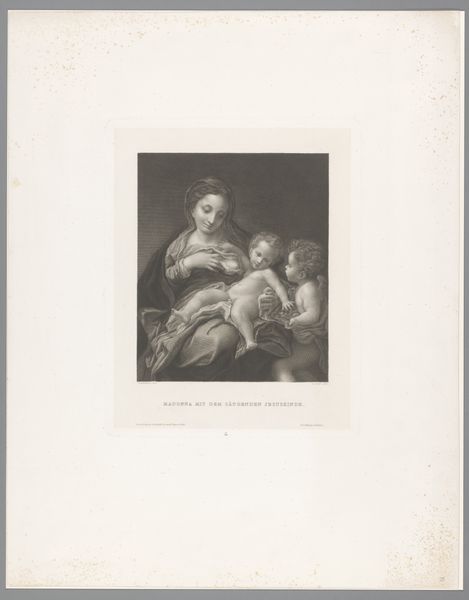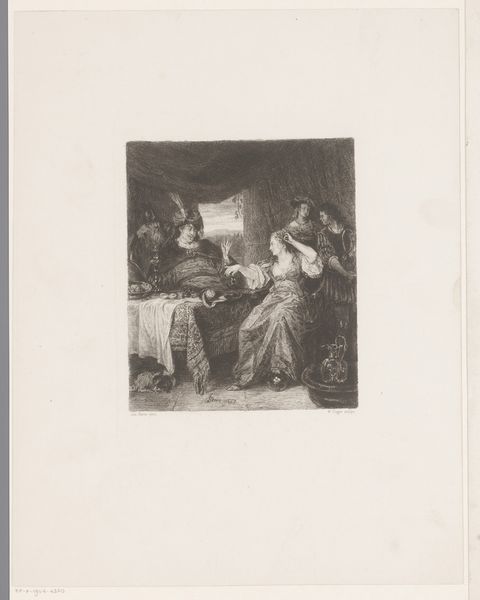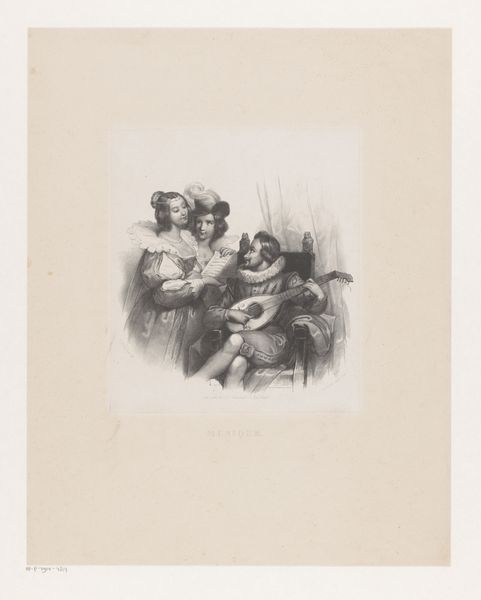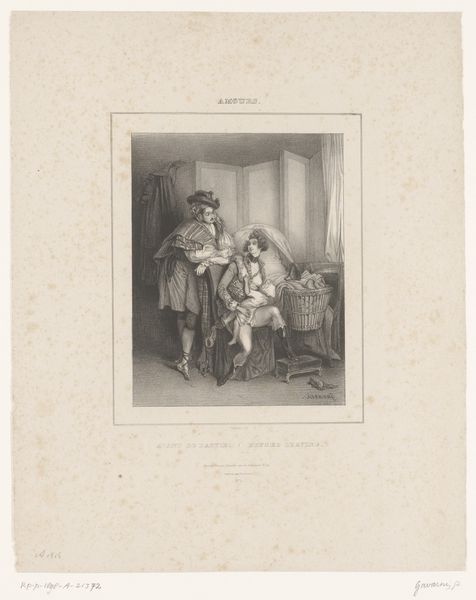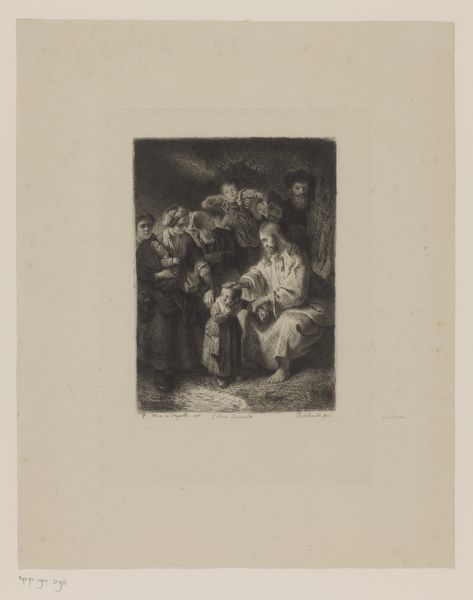
print, etching
#
light pencil work
#
pale palette
# print
#
etching
#
light coloured
#
old engraving style
#
limited contrast and shading
#
genre-painting
#
realism
Dimensions: height 102 mm, width 82 mm
Copyright: Rijks Museum: Open Domain
Curator: Welcome. We’re standing before Henri François Schaefels' "Theaterloge met zes figuren," likely created between 1837 and 1904. It’s an etching, giving it a fascinating textural quality. Editor: The first thing that strikes me is the rather muted palette, and the effect that has on the overall tone. There's a kind of hushed stillness, almost melancholy, despite the presumably lively context of a theater. Curator: Indeed. The limited contrast draws attention to the composition itself. The figures are arranged in a pyramidal structure, anchoring the gaze. Note the details of the drapery, how the lines create a sense of depth and enclosure. The use of hatching to define form and volume is remarkable, especially given the monochromatic nature of the print. Editor: And speaking of the monochromatic, that lightness contributes to an antique feeling, as does the technique of etching. It's also clear this is a product of labor: the fine lines created by meticulous scratching away at the metal, in the production of a multiple through printing. How many impressions would be possible with this level of fineness? What sort of working conditions might he have had? It speaks of a pre-industrial, slower way of making images. Curator: It certainly emphasizes the human element in its creation. Yet the subject matter also reflects a very specific social class – the bourgeoisie at leisure, a display of wealth and status through attendance at the theater. This creates a visual tension between the artistic labor and the societal scene being depicted. Editor: It's like two forms of production, isn't it? The means of producing art and the conditions of producing the kind of lives that are lived and represented in the work. Also I wonder what kind of access would ordinary people had to artworks like this. Curator: The circulation of prints was often how ordinary people accessed images. This allows genre scenes to circulate broadly, informing or reinforcing cultural norms. This image can act as a snapshot of cultural consumption in Schaefels' time. Editor: A valuable lens into both art production and social structure. The choice of the theater—with all its own staging and fabrication—as the scene emphasizes this theme of production. Curator: An elegant dance of form, content, and context. Editor: An artifact speaking to artistry, labour, and audience experience all in one.
Comments
No comments
Be the first to comment and join the conversation on the ultimate creative platform.
